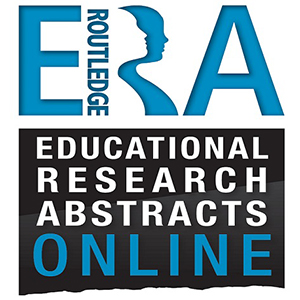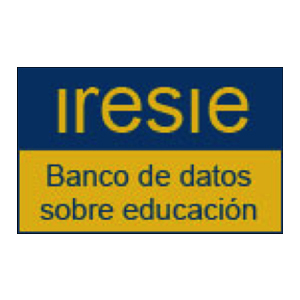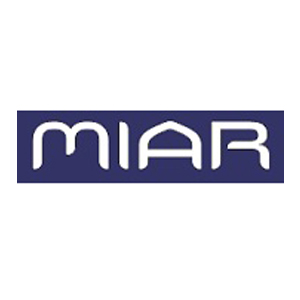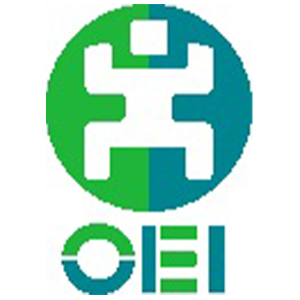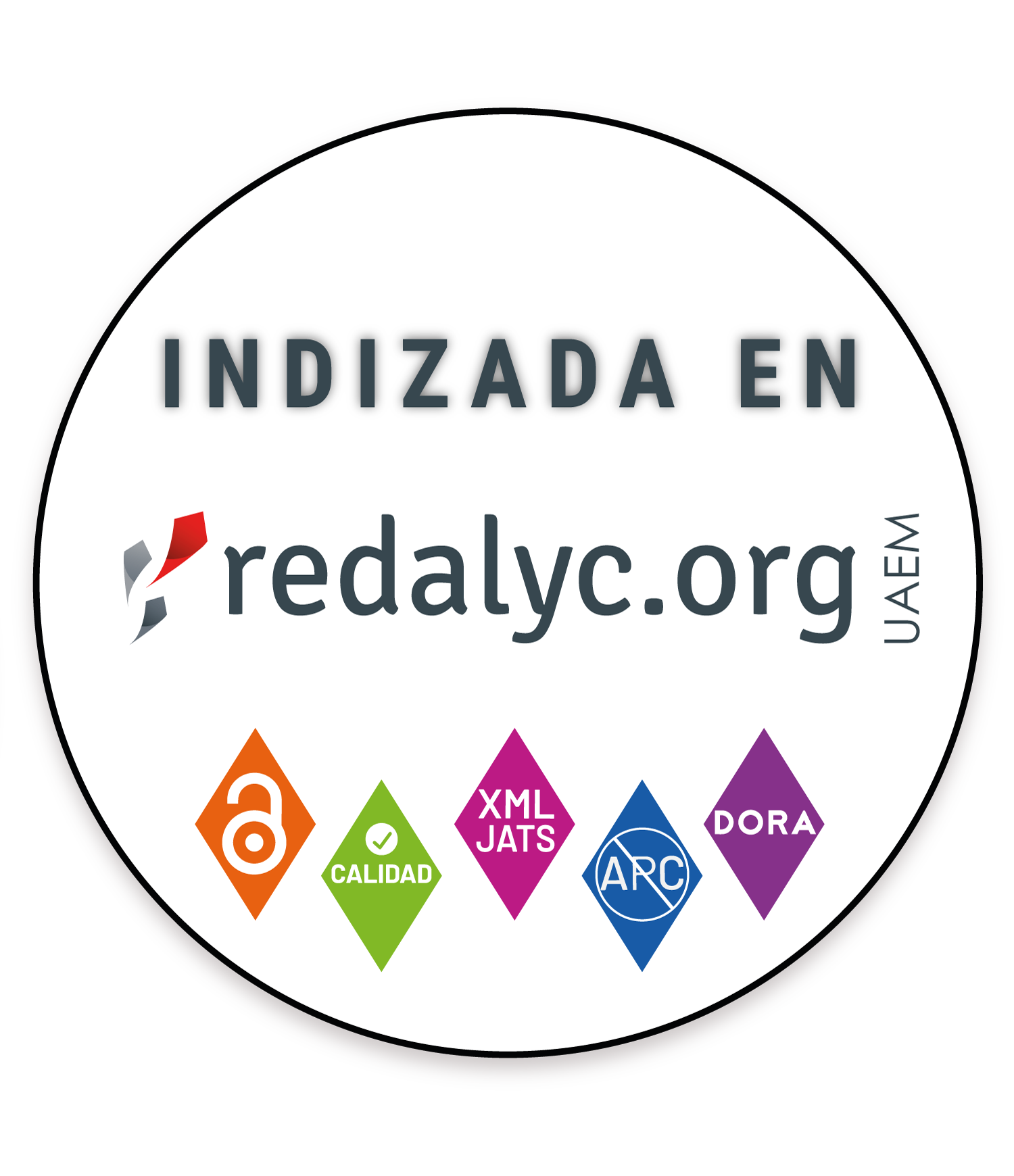Analysis of Learning Styles of Students Enrolled in a Technical Course in Electromechanics with the Application of the Inventory of Kolb
Análisis de estilos de aprendizaje de ingreso de un curso técnico en electromecánica con la aplicación del inventario de kolb
Análise dos estilos de aprendizagem de estudantes inscritos em um curso técnico em eletromecânica com a aplicação do inventário de kolb
El presente artículo tiene como objetivo principal identificar los estilos de aprendizaje de los estudiantes matriculados en una escuela secundaria técnica, concomitante a un curso de electromecánica, de acuerdo con los preceptos de la Teoría del Aprendizaje Experiencial de David Kolb. Este texto es parte de una investigación de doctorado que tiene como objetivo investigar cómo se pueden combinar diferentes recursos tecnológicos en un Ciclo de Aprendizaje Experiencial y verificar sus beneficios para la enseñanza de la Física. Los resultados obtenidos permiten a los estudiantes realizar metacognición y a los docentes comprender cómo los estudiantes se apropian del conocimiento. Los resultados servirán como punto de partida para la elaboración de estrategias pedagógicas considerando la Teoría del Aprendizaje Experiencial. Los resultados también demostraron una heterogeneidad entre los estudiantes, ya que se identificaron los cuatro estilos de aprendizaje entre los 71 estudiantes encuestados (Asimilador, Acomodador, Convergente y Divergente). Sin embargo, se destacó entre los estudiantes el estilo Asimilador, que representa el 35,2%, del cual se corrobora con los estudios de Kolb, demuestran que los individuos que optan por cursos que involucran las áreas de Ciencias Físicas y Matemáticas presentan predominantemente este estilo de aprendizaje.
estilos de aprendizaje, teoría del aprendizaje experiencial, enseñanza de la física, electromecánica, escuela secundaria (es)
estilos de aprendizagem , teoria de aprendizagem experiencial, ensino de física , eletromecânica , ensino médio (pt)
Abdulwahed, M., & Nagy, Z. K. (2011). The TriLab, a novel ict based triple access mode laboratory education model. Computers & Education, 56(1), 262-274.
Dewey, J. (1938). The theory of inquiry. New York: Holt, Rinehart & Wiston.
Freire, P. (1973). Education for critical consciousness (Vol. 1): Bloomsbury Publishing.
Herrera Cifuentes, M. F., & Zapata Castañeda, P. N. (2012). Estudio correlacional de estilos de aprendizaje de estudiantes con modalidad en Ciencias Naturales. Tecné, Episteme y Didaxis, TED, 31, 27-43.
Instituto Federal de Santa Catarina (ifsc)-Campus Araranguá (2012). Projeto Pedagógico De Curso Técnico Integrado em Eletromecânica.
Kolb, A., & Kolb, D. (2005). The Kolb Learning Style Inventory-version 3.1 2005 technical specifications. Hay Resources Direct. https://www.researchgate.net/publication/241157771_The_Kolb_Learning_Style_Inventory-Version_31_2005_Technical_Specifi_cations
Kolb, A. Y., & Kolb, D. A. (2017). The experiential educator: Principles and practices of experiential learning. Experience Based Learning Systems.
Kolb, D. A. (1984). Experiential learning: Experience as the source of learning and development. Prentice Hall.
Kolb, D. A. (2014). Experiential learning: Experience as the source of learning and development. FT press.
Kolb, D. A., & Fry, R. E. (1975). Towards an applied theory of experiential learning. In C. L. Cooper (Ed.), Theories of group processes. John Wiley & Sons
Konak, A., Clark, T. K., & Nasereddin, M. (2014). Using Kolb’s Experiential Learning Cycle to improve student learning in virtual computer laboratories. Computers & Education, 72, 11-22.
Leitão, M. B. P. (2006). Estilos de aprendizagem sob a ótica da psicologia evolucionista. Universidade Federal do Rio Grande do Norte.
Lewin, K. (1951). Field theory in social science. Research Center for Group Dynamics. The University of Michigan.
Omeodu, M. D. (2020). Investigating students’ academic performance in Physics based on Kolb’s Experiential Learning Model in Rivers state. Asian Journal of Advanced Research and Reports, 12(4), 9-17.
Organization for Economic Cooperation and Development (oecd). (2019). Programme for International Student Assessment (pisa) Results from pisa 2018.
Piaget, J. (1970). Genetic epistemology. Columbia University Press.
Zainal, N. F. A., Din, R., Majid, N. A. A., Nasrudin, M. F., & Rahman, A. H. A. (2018). Primary and Secondary School Students Perspective on Kolb-based stem Module and Robotic Prototype. International Journal on Advanced Science, Engineering and Information Technology, 8(4-2), 1394-1401.
APA
ACM
ACS
ABNT
Chicago
Harvard
IEEE
MLA
Turabian
Vancouver
Descargar cita
Citaciones

1. Siti Hazyanti Mohd Hashim. (2023). Framework of Metaverse Educational Learning of Virtual Reality Environment in Improving Current Learning Problem. 2023 IEEE 8th International Conference on Recent Advances and Innovations in Engineering (ICRAIE). , p.1. https://doi.org/10.1109/ICRAIE59459.2023.10468539.
Métricas PlumX
Visitas
Descargas
Recibido: 30 de enero de 2022; Aceptado: 3 de agosto de 2022
Abstract
The present paper has as its main goal to identify the learning styles of students enrolled in technical high school concomitant to an electromechanical cour-se, according to the precepts of David Kolb’s Experiential Learning Theory. This study is part of doctoral research that aims to investigate how different technological resources can be combined in an Experiential Learning Cycle and verify their benefits for teaching Physics. The results obtained made it possible for students to perform metacognition, and for teachers to unders-tand how knowledge is appropriated by their students. The results will serve as a starting point for the elaboration of pedagogical strategies considering the Theory of Experiential Learning. The results also showed heterogeneity among the students since the four learning styles were identified among the 71 students surveyed (assimilating, converging, accommodating, and diverging). However, the Assimilating style stood out among students, repre-senting 35.2%, which corroborates with Kolb’s studies, which demonstrate that individuals who choose courses involving the areas of Physical Sciences and Mathematics present predominantly this learning style.
Keywords:
learning styles, experiential learning theory, physics teaching, electrome-chanics, high school.Resumo
O presente artigo tem como principal objetivo identificar os estilos de aprendizagem dos estudantes matriculados em uma escola de ensino médio técnico, concomitante de um curso de eletromecânica, conforme os preceitos da Teoria de Aprendizagem Experiencial de David Kolb. Esse texto faz parte de uma pesquisa de doutorado que tem como objetivo investigar como diferentes recursos tecnológicos podem ser combinados em um Ciclo de Aprendizagem Experiencial e verificar seus benefícios para o ensino de Física. Os resultados obtidos possibilitam aos estudantes a realização da metacognição e aos professores compreender como os estudantes se apropriam do conhecimento. Os resultados servirão como ponto de partida para a elaboração de estratégias pedagógicas considerando a Teoria de Aprendizagem Experiencial. Também, os resultados demonstraram uma heterogeneidade entre os estudantes, uma vez que foram identificados os quatros estilos de aprendizagem entre os 71 estudantes entrevistados (Assimilador, Arrumador, Convergente e Divergente). Entretanto, destacou-se entre os estudantes o estilo Assimilador, que representa o 35,2%, do qual corrobora com os estudos de Kolb, demonstram que os indivíduos que optam por cursos que envolvem as áreas de Ciências Físicas e Matemática apresentam predominantemente este estilo de aprendizagem.
Palavras-chave:
estilos de aprendizagem, teoria de aprendizagem experiencial, ensino de física, eletromecânica, ensino médio.Resumen
El presente artículo tiene como objetivo principal identificar los estilos de aprendizaje de los estudiantes matriculados en una escuela secundaria técnica, concomitante a un curso de electromecánica, de acuerdo con los preceptos de la Teoría del Aprendizaje Experiencial de David Kolb. Este texto es parte de una investigación de doctorado que tiene como objetivo investigar cómo se pueden combinar diferentes recursos tecnológicos en un Ciclo de Aprendizaje Experiencial y verificar sus beneficios para la enseñanza de la Física. Los resultados obtenidos permiten a los estudiantes realizar metacognición y a los docentes comprender cómo los estudiantes se apropian del conocimiento. Los resultados servirán como punto de partida para la elaboración de estrategias pedagógicas considerando la Teoría del Aprendizaje Experiencial. Los resultados también demostraron una heterogeneidad entre los estudiantes, ya que se identificaron los cuatro estilos de aprendizaje entre los 71 estudiantes encuestados (Asimilador, Acomodador, Convergente y Divergente). Sin embargo, se destacó entre los estudiantes el estilo Asimilador, que representa el 35,2%, del cual se corrobora con los estudios de Kolb, demuestran que los individuos que optan por cursos que involucran las áreas de Ciencias Físicas y Matemáticas presentan predominantemente este estilo de aprendizaje.
Palabras clave:
estilos de aprendizaje, teoría del aprendizaje experiencial, enseñanza de la física, electromecánica, escuela secundaria.Introduction
Different circumstances have made it difficult for Brazilian students to perform satisfactorily in areas related to STEM (Science, Technology, Engineering and Mathematics), whether due to the lack of resources, professionals, experimental laboratories, teaching materials appropriate for the students’ profiles, and even methodologies that encourage experiential learning.
The panorama presented at the Program-me for International Student Assessment (PISA) 2018 demonstrates that Brazilian students have difficulties regarding knowledge related to science. The country remains in the last positions in the general ranking, falling from the 63rd to the 67th position. The average of Brazilian students was 404 points, out of an average of 489 from countries belonging to the Organisation for Economic Cooperation and Development (OECD). In addition, more than 55% of these students are below level 2, which is considered by the OECD as necessary for young people to fully exercise their citizenship, and only 1% reached level 5, which is the most advanced stage (OCDE, 2019).
In this perspective, the traditional class-room arrangement, with the teacher as its central figure and the textbook as a support resource, and the consequent lack of meaning-ful practical activities, creates an abyss between principles considered relevant for learning, such as experiencing processes, reflecting, thinking and acting, making it impossible for the student to experience the content, make generalizations and apply in new situations.
David Kolb (1984) , who developed the experiential learning theory (ELT), highlights that knowledge results from the interaction between theory and experience, in a dialogical relationship. ELT’s aim is to suggest “an integrative holistic learning perspective that combines experience, perception, cognition and behavior” (Kolb, 2014, p. 31). Therefore, for the author, new knowledge is achieved through the confrontation among four modes of experiential learning: concrete experience (CE); reflective observation (RO); abstract conceptualization (AC), and active experimentation (AE), and the way the subject solves this conflict when learning will outline your learning style in that situation.
In this context, Kolb developed the concept of experiential learning cycle, a dynamic and holistic model of the learning process directly related to the learning styles defined by ELT, highlighting the processes of feeling, reflecting, thinking, and acting. Each individual has his/her own learning style, and the cycle seeks to take advantage of the characteristics of these styles, in addition to stimulating the emergence of new learning styles in students that enable learning at a higher level, when we are able to apply knowledge in a creative and innovative way (Kolb, 2014).
The concept of learning styles from the perspective of ELT emerged during the implementation of the Massachusetts Institute of Technology (MIT) experiential learning curriculum development project by Kolb and his collaborators. The researchers noticed different reactions from students to the new format of the course. Although there was general acceptance of the experimental model, some reported that the teacher was not “teaching”, others were visibly anxious and uncertain, while others were highly involved.
Faced with the new paradigm, Kolb developed the Kolb Learning Styles Inventory (KLSI) in order to help students understand the experiential learning cycle and identify their own learning mode. Thus, he contributed to the development of students’ metacognitive learning skills and in the decision-making process.
That way, the importance of verifying the learning styles of students enrolled in the technical high school of the electromechanical course, concomitant modality, demonstrates the interest in understanding how knowledge is appropriated through the experiences of enrolled students, contributing to the improvement of the teaching and learning process of the course. In addition, the results obtained will serve as support and sampling for a doctoral research that aims to investigate how different technological resources can be combined in an experiential learning cycle and its benefits for the teaching of Physics.
Therefore, the purpose of this study is to identify the learning styles of students enrolled in technical high school in the Electromechanics course, concurrent modality, from the Federal Institute of Santa Catarina, Brazil, in order to enable students to apply metacognition strategies, in addition to guiding the teaching practices. For that reason, a quantitative research was developed, following the technical procedures of an exploratory case study.
Kolb’s theory of experiential learning and learning styles
The theory of experiential learning is understood as the appropriation of knowledge through the experiences of the learner. In this perspective, Kolb (2014) highlights that knowledge results from the interaction between theory and experience, so it is through the dialogical relationship between these two elements that learning and human development happen.
Kolb (2014, p. 49) argues that “learning is the process by which knowledge is created through the transformation of experience”. As a result, ELT integrates the work of different twentieth-century scholars, such as John Dewey (1938) , Kurt Lewin (1951) , Jean Piaget (1970) , and Paulo Freire (1973), whose experience is central to their theories of learning and human development.
The processes of experiencing, reflecting, thinking, and acting are the central principles of ELT. According to Kolb and Fry (1975) , experience itself is not enough to learn. Because of this, it is necessary to reflect on that experience and be able to make generalizations, formulating concepts that can be applied in new situations. Then, this learned concept must be put into practice in new situations. In this process of action and reflection, the student makes the connection between theory and practice, acting, reflecting, and relating it again to the theory. In this way, learning becomes more effective.
As a result, according to Kolb (2014) , the learning process requires the re-solution of conflicts between dialectically opposed ways of adjusting to the world: “the new knowledge, skills or attitudes are achieved through the confrontation among four modes of experiential learning” (our translation), which need to be mastered to achieve effective learning:
-
Concrete experience skills. The individual must be able to engage fully, openly and without bias in new experiences.
-
Reflective observation skills. The in-dividual must be able to observe his/her own experiences from various perspectives.
-
Abstract conceptualization skills. The individual must be able to develop concepts that integrate his/her observations into logical theories.
-
Active experimentation skills. The individual must be able to use these concepts to make decisions and solve problems.
However, the author recognizes that the scope of the four skills to learn is not trivial, as they consist of opposite skills which, therefore, are difficult to activate simultaneously. This is so, because the subject needs to act and reflect, while he/she must concretely experiment and perform conceptual interpretations. Consequently, to learn the subject resolves conflicts through a choice, and the result of these decisions determine the set of skills that will be used in a given situation. This outlines the learning style of that subject, in that situation.
In this perspective, Kolb (2014) states that there are two main dimensions in the learning process. The first one corresponds to the process of “apprehending the experience”, while the other refers to the process of “transforming the experience”. In turn, each of these dimensions has two different ways to capture and transform the experience. To apprehend/capture an experience, the individual can choose between using conceptual interpretation and symbolic representation or using the tangible and felt qualities of the immediate experience. Kolb (2014) defines these two forms of adaptation as abstract conceptualization and concrete experience. Likewise, to transform this experience into knowledge, the subject can choose to perform an internal reflection or an active external manipulation of the world. This represents, respectively, reflective observation and active experimentation, two modes of adaptation. Figure 1 presents these dimensions and their adaptation modes.
Figure 1: Kolb’s modes of adaptation
Therefore, the choices that each individual makes in his/her learning process to capture and transform the experience can result in different learning paths, moving the individual in varying degrees from actor to observer, and from practical involvement to analytical distance (Kolb & Fry, 1975). Consequently, it is the way in which conflicts between dialectically opposed modes of adaptation are resolved what determines the resulting level of learning. And that learning will be specialized around the dominant mode and limited in areas controlled by the dominated mode.
Thus, for Kolb and Fry (1975) each individual has a learning style that will outline how the experience will be captured and transformed. These styles are: converging (active), diverging (reflective), assimilating (theoretical), and accommodating (pragmatic) (Table 1).
Source: Adapted from Kolb and Fry (1975) .
Table 1: Learning Styles according toKolb and Fry (1975)
Styles
Characteristics
Skills description
Diverging
Concrete experience
+
reflexive observation
Strong imaginative ability.
Very good at generalizing ideas and can see things from different perspectives.
Interest in people.
Broad cultural interest.
Assimilating
Abstract conceptualization
+
Reflective observation
Strong ability to create theoretical models.
Stands in the analytical reasoning.
More concerned with abstract concepts than with people.
Converging
Abstract conceptualization
+
Active experimentation
Strong in the practical application of ideas.
Can focus on deductive reasoning for problems.
Not emotional.
Has well-defined interests.
Accommodating
Concrete experience
+
Active experimentation
Great strength to accomplish things.
More than a risk bettor.
Reacts immediately when required.
Solve problems intuitively.
The diverging learning style is the result of the tendency to capture the experience by “apprehension” (CE) and transform by “intention” (RO). Diverging people observe situations according to different perspectives. They tend to perceive, apprehend, or obtain new information through symbolic representation -thinking, analyzing or planning. They have strong imaginative skills, in addition to perform better when situations require generalization of ideas. These individuals have a broad interest in cultural aspects and in information sharing. On the other hand, assimilators capture the experience through “understanding” (AC) and transform it through intention (RO). These individuals tend to look closely at others who are involved in the experience and to reflect on what happens. They have a strong ability to create theoretical models and analytical reasoning. They prefer readings, explore analytical models, and reflect on the contents (Kolb and Fry, 1975).
Differently, converging people are characterized by the combination of AC and AE. They apprehended the experience by understanding and transform it by extension. These individuals perceive new in-formation through symbolic representation and conceptual interpretation and transform the experience through the external manipulation of the world. Therefore, they have strong skills for the practical application of ideas. Finally, accommodators have CE and EA as dominant skills -the experience is captured by apprehension and transformed by extension. These individuals have an ability to learn from experience and are more likely to take risks and solve problems intuitively.
Kolb (2014) points out that in order to achieve superior forms of adaptation, such as for the development of creativity and personal growth, conflicts between adaptive modes need to be resolved by integrating the four adaptive modes into a creative synthesis. For this rea-son, in his studies, this author emphasizes the importance of encouraging the integral development of adaptation modes. Because of that, it is necessary to plan learning activities that enable the development of critical thinking and meaningful learning, and consequently provide a cognitive conflict until the largest number of learning styles are reached.
Based on these premises, David Kolb developed a dynamic and holistic model of the process of learning from experience, the Experiential Learning Cycle. This model aims to explore the four modes of adaptation in a way that allows the student to pass through all modes so that, regardless of their learning style, individuals can make full use of the learning process. It also stimulates the emergence of a greater number of learning styles, in such a way that they enable learning at a higher level. Therefore, learning styles are different ways in which individuals use the learning cycle to learn.
In addition, Kolb (1984) developed the Kolb Learning Style Inventory (KLSI) in order to help students understand the experiential learning cycle and identify their preferred learning mode, contributing to the development of students’ metacognitive learning skills and their decision-making process. The KLSI proved to be very popular with students. They felt that the inventory gave them a greater understanding of themselves and also a view of their relationships with others, whose style was different from theirs. The fact that simple self-assessment exercise helped apprentices to gain some insights about themselves and others as apprentices also inspired Kolb and his collaborators to develop systematic research with the instrument to define its theoretical foundations and explore its reliability and validity. Consequently, the instrument has been constantly updated (Kolb and Kolb, 2017).
E LT theory in practice with educational technologies
The use of ELT and Kolb’s learning styles associated with educational technologies appears in numerous studies in the literature. Studies have defended the use of ELT to conduct classes with laboratory practices, as they argue that in laboratories with good performance, besides practical action, it is necessary to lead the student to moments of reflection, allowing the transformation of experience into knowledge to occur (Abdulwahed & Nagy, 2011; Konak et al., 2014; Zainal et al., 2018).
Thus, Abdulwahed & Nagy (2011) used ELT to develop a laboratory education model that combined practical sessions with remote, virtual and real laboratories. The results of the study clearly showed the positive impact of the application of different types of laboratories for teaching, generating important educational results and motivation in student learning. Abdulwahed & Nagy (2011) explain that the low performance of students in laboratory practices is mainly due to the dimension of capturing the experience. To overcome this limitation, the method uses a combination of sessions from different technologies, as well as pre and post lab tests to maximize information retention, activating the stages of the Kolb learning cycle.
Konak et al. (2014) present a study that uses the ELT as a framework to design practical activities in virtual computer laboratories for teaching information security. According to the authors, the traditional “cookbook” approach -whereby only step-by-step instructions are provided to students, followed by questions that do not delve into the discussion- limits learning and the ability of students to reflect on their practices, as well as of not challenging students to learn. Based on this premise, the authors describe an example of how the Kolb cycle can be used in practices for teaching information security. To verify whether a practical activity, including all stages of Kolb’s ELT, contributes to achieving a higher level of learning, the authors used a questionnaire. The average questionnaire score was about 9.6% higher in the treatment group compared to the control group (p = 0.058).
In a recent study, Zainal et al. (2018) developed a STEM module for robotics teaching based on the stages of the Kolb cycle, in order to assess students’ perceptions of their competences and interests in STEM areas. The study was evaluated using the data collection instrument used by Konak et al. (2014) . Among the results, Zainal et al. (2018) state that the students’ perception of the interaction, engagement, competence, and interest factors obtained high scores, between 4 and 5 points on the Likert scale, with only the challenge having a moderate score, with 3.04 points.
Throughout this section, we sought to relate the applications of experiential learning theory in practice using educational technologies, in order to understand how Kolb’s theory can support the pedagogical use of these technologies. Thus, it is clear that the use of experiential learning theory in the creation of pedagogical strategies that articulate educational technologies can be considered innovative in the academic environment.
Methodological Procedures
The present study was developed through a qualitative and quantitative research of an exploratory case study, in order to identify the learning styles of students enrolled in the technical high school of the electromechanical course, concurrent modality, from the Federal Institute of Santa Catarina, Araranguá-Brazil. This study is an excerpt from a doctoral research that aims to investigate how different technological resources can be combined in an experiential learning cycle and what are its benefits for teaching physics concepts. The diagnosis presented in this article will serve to guide teaching practice, and will contribute to students’ metacognition, so that they can fully take advantage of the new teaching methodology that will be implemented through Kolb’s learning cycles.
The method adopted for choosing the sample was non-probabilistic for convenience. The questionnaire was applied via the Internet, using an online questionnaire. The results of the learning styles were sent individually via email. Seventy one students were interviewed, from two classes (Class A-Morning, and Class B-Evening). Fifty five out of them (77%) are male, and 16 (23%) are female, aged 14 to 17 years (Table 2). Most students are graduates of public schools, that is, 79% attended elementary school at a public education institution.
Source: Own elaboration.
Table 2: Percentage of students by age
Aged
14
15
16
17
Freq.
28
33
7
3
(%)
39%
46%
10%
4%
As a data collection instrument, the researchers used the KLSI version 3.1, developed by David Kolb (Kolb & Kolb, 2005) . It consists of 12 items of self-description. In each of these items, there are four options for ordering, according to preference during the learning process. Each of the four alternatives refers to one of the four learning modes defined by Kolb (1984): CE, RO, AC, and AE (as presented in the previous section). After completing the inventory, it is possible to assess, through the graph and calculations described by Kolb and Kolb (2005), the individual learning style. The KLSI version 3.1 is administered by Korn Ferry. In order to obtain authorization to use the instrument for the purposes of this study, contact was made with the company, which allowed to conduct the research and made available the necessary materials.
The data were organized by means of counts or frequencies of items of two or more classes, and proportion tests were used to analyze them in order to answer the following research questions:
-
Is there a predominant learning style among course students?
-
Are there differences between classes (A and B) in terms of the distribution of learning styles?
-
What learning styles are the most evident between the female and male genders? Is there an association be-tween learning style and gender?
-
What learning styles are the most evident by age group? Is there an association between learning style and age group?
In ordert to solve these questions, chi-square tests were used, with the aid of the statistical software SPSS. A 5% probability level was adopted as a criterion for testing the statistical hypotheses. Informed consent was obtained from all individual participants included in the study.
The goal was to collect data on students’ learning styles and offer each one his/her analysis. Knowing how students learn, they can seek ways to facilitate their learning taking into account the complexity of the relationships involved in the insertion process and the new technologies present in their daily lives and their formations.
Results
From the application of the KLSI, it was possible to identify the four learning styles among students. As shown in Figure 3, the most frequent learning style is assimilating (35.2%). The accommodating style also stands out among the results, appearing in 29.6% of students, followed by the diverging style, with 21.1%. The less evident style in the sample studied is converging (only 14.1%).
Figure 2: Percentage of students by learning style
To perform a detailed analysis of the students “learning styles, observing the students” preferences between abstraction on concrete (AC-CE) and action for reflection (AE-RO), the learning style grid was used (Figure 3). By crossing the values obtained in each axis from the responses to the KLSI 3.1 questionnaire, it is possible to verify how much an individual trusts in a specific learning style, or if he/she is guided by more than one style. These values are obtained by calculating the averages for each adaptation mode, which are subtracted between the AE-RO and AC-EC axes. Thus, when crossing the data in the grid, if the data point falls on the edges, in the shaded area, the individual tends to rely on that learning style a lot. However, if the data point falls on a shaded area, the style is characterized by a combination of adjacent learning styles.
For example, if the data point falls into the shaded area between the accommodator and diverger quadrants, the learning style is characterized by a strong orientation towards concrete experience (CE), with equal emphasis on active experimentation (AE) and reflective observation (RO), and with little emphasis on abstract conceptualization (AC). The closer the data point is to the center of the grid, the more balanced the learning style, also combining experience, thinking, reflection and action (Kolb & Kolb, 2005). Figure 3 presents the data points of each student. The sample mean of the AC-CE and AE-RO axes are 6.7 and 5.5, respectively.
Figure 3: The learning style grid-Data points of each student
That way, it can be seen that 30% of students have a specific learning style, while 70% is influenced by more than one style and 7% has a balanced learning style. The most evident combination is between assimilating and diverging, being presented by 21% of students, which indicates a preference of the sample group for the reflexive observation (RO) adaptation mode. This propensity of the sample group for RO is even more evident when plotting the average scores of CE, RO, AC and AE in the Kolb learning cycle (Figure 4), according to the rules established in KLSI 3.1 (Kolb & Kolb, 2005). As can be seen in Figure 4, the group of students has a balance in relation to the experience apprehension axis (AC-CE), but they have an inclination towards RO in detriment to AE in the experience transformation axis (AE-RO).
Figure 4: Learning cycle (Kolb, 2005) with the students’ profile (N = 71). Adaptation mode data: CE (µ = 24.4), RO (µ = 29.9), AC (µ = 31.1), AE (µ = 34.5)
Regarding the learning styles and the age group of the students, those between 14 and 17 years old were found in the researched classes, since these are composed of regular and repeating students. This led to the question of whether there is any difference in style predominance by age group. It was noticed that among students aged 14 to 15 years, the learning styles assimilating (36%) and accommodating (30%) stand out, whereas among students aged 16 to 17 years the predominant styles are assimilating (30%) and converging (30%), as seen in Figure 5.
Figure 5: Learning Styles graph by age group
In order to verify whether there is an association between the variables style and age group, the hypothesis (H0) that these variables are independent was tested. The results found (Table 3) show that there is no evidence to reject the formulated hypothesis (p = 0.20).
Source: Own elaboration.
Table 3: Results of the chi-square test for age group learning style
X2
4.6729
gl
3
p-value
0.20
alpha
0.05
The average AC-CE scores between the age groups were similar, with 6.6 and 6.9. However, there was a difference between the average scores of AE-RO: while students aged 14-15 years prefer reflective observation (3.9), those aged 16-17 years are inclined towards active experimentation (8.7). Applying the t-test it is possible to verify that the difference found between the means of AE and RO for the age groups is not statistically significant (p > 0.05) (Table 4).
Source: Own elaboration.
Table 4: Average AC-CE and AE-RO scores between age groups
Age
n
%
AC-CE
AE-RO
14-15
10
14
6.6
3.9
16-17
61
86
6.9
8.7
Total
71
100
6.7
5.5
The learning style between the female and male genders was also analysed. It was observed that accommodating was the most found learning style in the female group (50%), while the assimilating predominated in the male group (33%) (Figure 6).
Figure 6: Learning styles graph by gender
In order to verify whether there is an association between learning style and gender, the hypothesis (H0) that the variables styles and gender are independent was tested. The results (Table 5) show that there is evidence to reject the formulated hypothesis (p = 0.04). Therefore, it is possible to state that the student’s gender can influence his/her learning style.
Source: Own elaboration.
Table 5: Results of the chi-square test for learning style and gender
X
2
8.4130
gl
3
p-value
0.04
alpha
0.05
The average scores of the AC-CE are the same between the two genders, differing only in the AE-RO orientation: while boys are inclined towards reflective observation (3.9), girls are prone to active experimentation (7.1). Applying the t-test to each of the averages, it is possible to affirm that there is no significant difference between the male and female genders as to the averages of the learning orientations (p > 0.05).
Source: Own elaboration.
Table 6: Average AC-CE and AE-RO scores between the two genders
Gender
n
%
AC-CE
AE-RO
Female
16
23
6.7
7.1
Male
55
77
6.7
3.9
Total
71
100
6.7
5.5
Figure 7: Average AC-CE and AE-RO scores between the two genders
Finally, it was sought to identify possible differences between classes regarding the distribution of learning styles. As can be seen in Table 7, Class A presents a predominance of assimilating and accommodating styles, and Class B presents a greater number of assimilating and diverging students.
Source: Own elaboration.
Table 7: Contingency table Style * Class
Class
Total
A
B
Learning styles
Accommodating
n
11
9
20
%
31.4%
25.0%
28.2%
Assimilating
n
12
13
25
%
34.3%
36.1%
35.2%
Converging
n
7
4
11
%
20.0%
11.1%
15.5%
Diverging
n
5
10
15
%
14.3%
27.8%
21.1%
Total
n
35
36
71
%
100%
100%
100%
Consequently, it is important to understand which learning styles are more and less evident in each class, so that teachers can personalize the learning taking into account the characteristics of each class.
Discussion
The research results showed that the assimilating learning style was the most evident among students enrolled in the technical course of medium level in Electromechanics (35,2%), followed by the accommodating (29%), di-verging (21%), and converging (14%) styles. This result coincides with the study by Herrera Cifuentes and Zapata Castañeda (2012) . The authors found similar results with high school students in Colombia, who presented the following learning styles: assimilating (32%), accommodating (31%), diverging (20%), and converging (15%).
At the same time, the results evidenced in the current research corroborate studies by Kolb and Kolb (2005) , which demonstrate that this learning style is predominant among individuals who choose courses that involve the areas of Physical Sciences and Mathematics (A. Kolb & Kolb, 2005). For that matter, when relating learning style to career, questions arise about how this relationship is shaped: whether the learning style is influenced by training/professional experience or whether the career is chosen by affinities with the individual’s style (Leitão, 2006).
Previous studies that relate these two fac-tors were carried out with adult individuals, who were already in college or exercising their careers (Kolb & Kolb, 2005; 2017). In contrast, this research deals with individuals entering a technical high school course, who are teenagers without any university experience or specialized education, since the research was carried out in the first week of class.
Omeodu (2020) investigated the academic performance of high school students in physics based on Kolb’s learning styles. This author showed that assimilating and converging students perform better in the discipline than those with other learning styles. Leitão (2006) , in his study with Brazilian students of the third year of high school, correlated the students’ learning style to their favorite school subjects. The author found a positive correlation between assimilating students and the subjects of Physics and Mathematics. In addition, Leitão (2006) observed that the average score in abstract conceptualization (present in the assimilating and converging styles) was significantly higher among students who chose the group of exact, Earth and engineering sciences as possible future careers. However, Leitão (2006) found no evidence to prove that learning styles are directly related to students’ future professional choices.
It is important to point out that almost 30% of the students in the Electromechanical technical course presented the accommodating learning style. Accommodator individuals predominantly use the AE and CE adaptation modes, that is, presenting characteristics opposite to those of the assimilating students. Accommodators stand out for their initiative and leadership, and the careers typically associated with this style involve the areas of management and teaching (Kolb & Kolb, 2017).
Kolb and Kolb (2005) explain that an individual’s learning style is shaped by personal and environmental factors at five different levels (personality, educational specialization, professional career, current employment, and adaptive skills). In the case of younger individuals, the first educational experiences can influence the learning style, instilling positive attitudes towards a set of skills, and consequently being able to influence future professional choices.
In this sense, it became evident that the assimilating-diverging combination appears more frequently in the research population (Figure 3). Assimilators and divergers are characterized by reflective observation as a way to transform the experience. It can be noticed that the students of the technical course in Electro-mechanics are more reflective (RO) than active (AE). This statement is even more evident when we observe the plot of the average scores of the adaptation modes in the diagram of the learning cycle (Figure 4). Similar results are found in the study by Kolb and Kolb (2005) , in which the normative group of KLSI 3.1 showed that adolescents (age < 19 years) are more focused on the field of reflection than on action, presenting higher scores in reflective observation than in active experimentation.
This trend among adolescents may be related to the format of the current basic education system. As already mentioned, the first educational experiences can influence the learning style, and in a predominantly theoretical educational system, with little practical involvement, it can influence individuals towards observation with impairment in the field of action (Leitão, 2006).
Kolb and Kolb (2005) verified that there is an increase in the active orientation of high school students to students of higher education courses, and that this guidance increases during the graduation years, due to the more active nature of some university courses. These results may explain the differences found in the AE-RO axis between the age groups (Table 4), since students aged 16 to 17 years, who had a greater orientation towards AE, are repeating students and had already attended a one-year course. According to the pedagogical project of the technical course in Electromechanics (IFSC, 2012), it has a practice-based approach, aiming at professional action, with a teaching methodology that contextualizes and puts learning into action.
It is possible that this teaching approach influences the students’ learning style towards more active guidance. However, it is important to point out that the results do not provide statistical proof of it. For this reason, the authors recommend carrying out new studies, with more students who are taking different stages of the course, in order to investigate this relationship.
With regard to learning styles and gender, a significant difference was noted between the female and male genders. While the accommodating learning style was the most frequent in the female group, in the male group it was the assimilating style. Therefore, the main difference between genders was observed in the AE-RO axis, with men being more reflective, and girls more active (Table 6). In relation to the AC-CE axis, there was no difference. Studies by Kolb and Kolb (2005) show that men tend to have higher levels of abstraction than women, that is, have higher values on the AC-CE scale. However, the data collected did not show this difference.
Accordingly, Kolb and Kolb (2005) warn that results related to gender need to be interpreted with care, since educational background and career choices generally interact with gender, making it difficult to determine what is actually related to learning styles, gender, or educational background. In addition, Kolb and Kolb (2017) point out that learning skills can become more or less developed depending on the experiences lived by the subjects, which brings as a consequence the notion that learning styles are not fixed traits and immutable.
Conclusions
This paper discussed Kolb’s experiential learning theory, which establishes that learning consists of four modes of adaptation, and individuals construct their learning style according to their life experiences, and environmental demands.
From this research, it was possible to highlight the learning styles of students enrolled in the technical course in Electromechanics, carried out concurrently with high school, in order to enable them to apply metacognitive strategies, and direct the pedagogical practice of teachers. The assimilating style was the most observed among the research population, which is in agreement with the results of Kolb and Kolb (2005) , who demonstrated that this learning style predominates in individuals who choose courses that involve the areas of Physical Sciences and Mathematics (Kolb & Kolb, 2005).
Knowing that the integration of dialectical conflicts between the four adaptive modes is the hallmark of true creativity and personal growth (Kolb, 2014), it is important to re-think the role of teachers, placing students at the center of their learning, seeking meaningful pedagogical practices that stimulate the processes of experiencing, reflecting, thinking and acting, and thus encouraging more learning styles to be developed by students.
As a perspective for the future, this research will focus efforts on showing how the use of active methodologies, which encourage student interaction, influence the performance of the different learning styles advocated by Kolb. Also, the researchers will attempt to investigate the impact of the learning cycle experience in the performance of students in the technical course in Electromechanics.
Licencia
Derechos de autor 2023 Tecné, Episteme y Didaxis: TED

Esta obra está bajo una licencia internacional Creative Commons Atribución-NoComercial 4.0.
Todo el trabajo debe ser original e inédito. La presentación de un artículo para publicación implica que el autor ha dado su consentimiento para que el artículo se reproduzca en cualquier momento y en cualquier forma que la revista Tecné, Episteme y Didaxis: TED considere apropiada. Los artículos son responsabilidad exclusiva de los autores y no necesariamente representan la opinión de la revista, ni de su editor. La recepción de un artículo no implicará ningún compromiso de la revista Tecné, Episteme y Didaxis: TED para su publicación. Sin embargo, de ser aceptado los autores cederán sus derechos patrimoniales a la Universidad Pedagógica Nacional para los fines pertinentes de reproducción, edición, distribución, exhibición y comunicación en Colombia y fuera de este país por medios impresos, electrónicos, CD ROM, Internet o cualquier otro medio conocido o por conocer. Los asuntos legales que puedan surgir luego de la publicación de los materiales en la revista son responsabilidad total de los autores. Cualquier artículo de esta revista se puede usar y citar siempre que se haga referencia a él correctamente.








